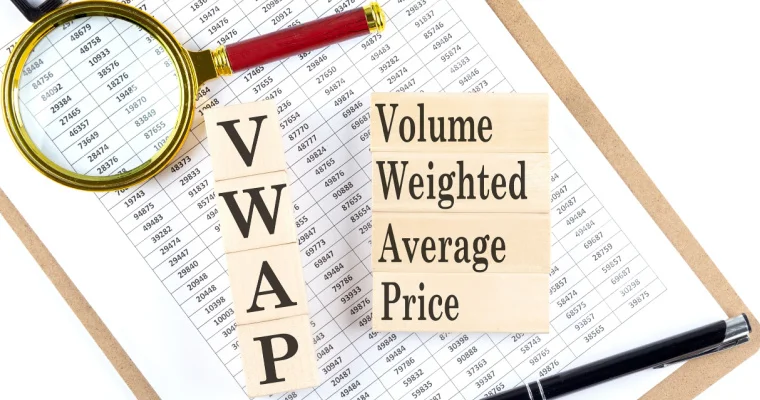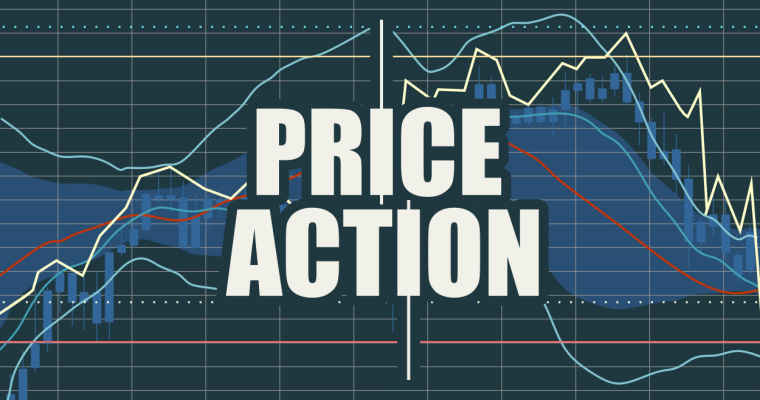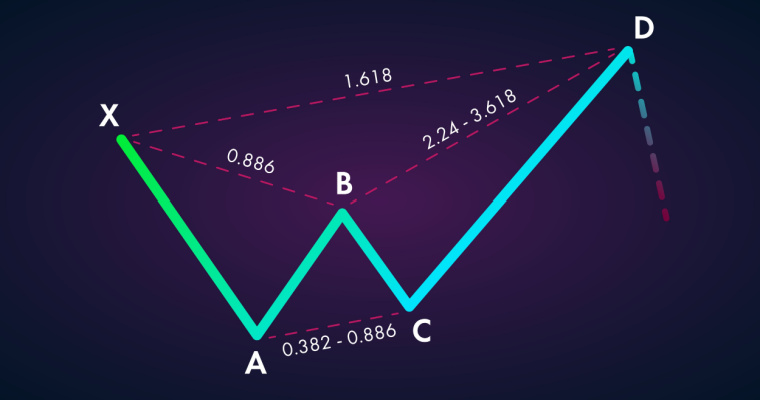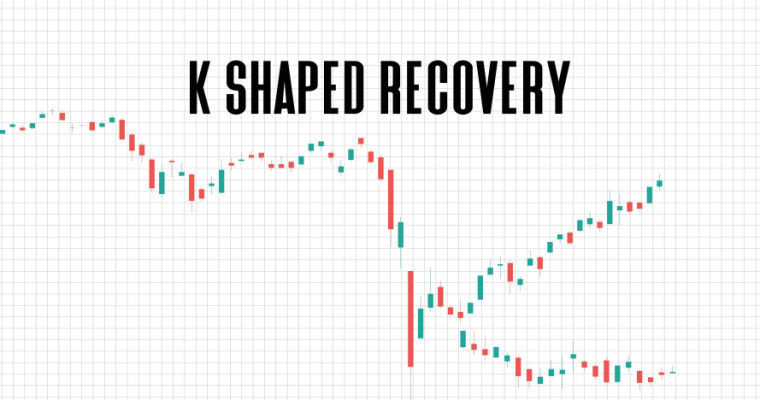What is Gann Theory and How is It Used in Trading?

The Gann theory, developed by trader and market expert William Delbert Gann, lays down helpful trading strategies that can help to earn attractive profits through trading. It is a popular theory among traders and has evolved to be a set of powerful tools for technical analysis. The theory was formulated nearly a century ago but is relevant even today and applicable to several investment types, such as cryptocurrencies and stock markets.
This article will talk about the Gann theory in the stock market, its application, advantages, and more. It will also help to understand how Gann’s principles can be used to maximise returns using efficient market predictions.
What is Gann Theory?
The Gann theory came into existence in the 1900s. The person behind the theory, WD Gann, was of the belief that stock prices changed according to angles. According to his observation, the price changes in the stock market are based on prevalent geometric shapes, and this can be used to forecast how the price will move in the future for any stock. Ancient mathematics, astrology, astronomy, and natural geometric shapes form the basis of WD Gann’s theory.
Also known as the Gann angles theory, this set of trading strategies is known to make asset predictions that are at least 90% accurate! However, the accuracy depends on whether the strategies are applied correctly or not. The theory entails that a time cycle exists in nature and also affects the market.
In reality, the theory is complex and must be studied carefully to understand the principles before using it in real trading. Understanding the theory and using it carefully can help to maximise trading returns.
Who was William Delbert Gann?
William Delbert Gann was a market forecaster, trader, and astrologer. He was behind the development of several tools for technical analysis. Gann angles are among these tools.
He was also the author of many trading courses and books. This includes his first book about the stock market, titled “The truth of stock tape”. WD Gann was revered for his 92% trading accuracy. This helped him to unlock success on Wall Street and earn significant profits. He was also the inventor of the ‘Square of nine chart’.
Also Read
What are Gann Angles?
Gann theory in the stock market contains multiple unique strategies for technical analysis. It involves analysing stock price charts based on angles and patterns that, according to Gann, have unique features that allow for predicting prices effectively.
A series of angles drawn and various price points help to forecast how the prices will move. These angles represent the characteristics of the stock price at different stages of time. Once the price points are connected on charts, Gann angles can be calculated.
According to Gann’s theory, the price and time are best when the relative angle of their rise and fall is 45 degrees.
How is Gann Theory used in Stock Market Trading?
Day traders globally use the Gann theory for intraday trading. Among his theories, the square of 9 method is the most popular. This method helps to make price forecasts by identifying the alignment of price and time.
The square of 9 has 81 numbers. At the centre is a static square that contains the number 1. This represents the historic low of the period. The next step is to move spirally and increase the value.
Fan Trading Strategy: A sequence of Gann angles is called a Gann fan. Price change predictions are made by superimposing the Gann fan over a price chart. The traders draw these angles across a price trend at 45 degrees. The angle must have an accurate 45-degree angle line. Traders often draw the Gann Fan at a reversal point to achieve this. Failing to maintain the angle may lead to ineffective and useless predictions.
A Gann fan offers helpful insights about support and resistance. Traders must use it in addition to other technical patterns, like a rising wedge or ascending broadening wedge, to determine useful entry and exit points.
The Gann theory of technical analysis and trading strategy has the following assumptions:
- A time cycle governs the ups and downs of prices in the stock market.
- Stock markets are designed geometrically, and their movement is also geometric.
- Range, time, and price are the only factors that affect the market.
While strategising their moves, traders must keep in mind that the market follows different angles that can only be rotated but ultimately remain the same. The path of asset movement can be from one angle to another.
According to the “Rule of all angles” entailed in WD Gann theory, on attaining one angle, the asset can move to another. Most traders use Gann angles to find the support and resistance lines.
A broken support is referred to as a break and indicates a price decline. Traders determine their time frames and draw Gann angles onto the stock chart. Also, once individuals set a time frame, they can draw out the Gann angles on the chart. 1X1, 2X1, 3,X1, 3X1, 1,X2, 1,X3 can be the angles. The lines help to analyse how the stock price will change.
Up-trending support angles show support, whereas down-trending angles are a sign of resistance. Traders may also use different angles to identify resistance or support. A bullish stock can retrace to 50%, which will then become the stock support. However, the 50% retracement level for bearish stocks becomes resistance.
Gann Theory Example
Here is an example to illustrate the benefits of Gann’s theory for traders.
Suppose the market follows an upward trend and stays above the ascending angle, and doesn’t break. If the Gann theory is used to analyse this situation and predict the movement, it will suggest that the market will follow an upward trend in the coming time.
On the contrary, if the market is following a downward trend and the stock price doesn’t cross the descending triangle, Gann’s theory will suggest that the prices will continue to decrease. This way, traders use the Gann trading strategy to make profitable decisions.
Application of Gann Theory
Below are some applications of the Gann theory:
- Tracking how the stock prices change by analysing Gann angles and using this analysis to predict future movements.
- Predicting when the stock value will reverse using Gann’s time study model. This is done by studying changes in stock prices over different spans.
Also Read
Advantages of Using the Gann Trading Strategy
The Gann trading strategy lays down effective ways to study the market and predict the price movement of assets. The strategies are over 92% accurate and help traders to make profitable trading decisions.
Final Word
Traders can benefit immensely from Gann’s theory because of its technical analysis capabilities. They can set targets and stop loss based on the last traded price using the 9 special numbers from the Gann square. The targets that a trader chases depend on their goals. Careful and correct use of Gann trading strategies can help to execute profitable trades. However, knowing the correct way to apply the theory needs experience and time.
FAQs
Ans: Traders need to know a top or bottom to draw Gann angles. Prices above the trendline indicate a bull market, whereas prices below the trendline characterise a bear market. According to Gann, a 1 x 1 trendline offers resistance and support during upward trends, whereas broken trend lines indicate trend reversal.
Ans: Patterns are a way to understand how stocks will move and what other investors are doing. The study of patterns also contains trends that show stock movement reversal.
Ans: Gann’s square of 9 is over 90% accurate. However, traders need to exercise caution while using it as it may sometimes lead to losses too.
Ans: A diagonal line moving at a uniform rate is termed a Gann angle. When there is an uptrend, bottoms are connected to bottoms to create a trendline. When the market moves downward, the tops are connected to tops to create the trendline. A Gann angle is more beneficial because it moves at a uniform speed and helps the analyst to forecast the price on a future date.
Ans: Apart from the prospective direction of stock prices, the Gann angle can also be used to forecast top and bottom timings, support, and resistance.
Want to put your savings into action and kick-start your investment journey 💸 But don’t have time to do research? Invest now with Navi Nifty 50 Index Fund, sit back, and earn from the top 50 companies.
Disclaimer: Mutual Fund investments are subject to market risks, read all scheme-related documents carefully.
This article has been prepared on the basis of internal data, publicly available information and other sources believed to be reliable. The information contained in this article is for general purposes only and not a complete disclosure of every material fact. It should not be construed as investment advice to any party. The article does not warrant the completeness or accuracy of the information and disclaims all liabilities, losses and damages arising out of the use of this information. Readers shall be fully liable/responsible for any decision taken on the basis of this article.

Customer’s Feedback
No comments found.Illiquid Stocks Guide: Definition, Examples, and its Working
Illiquid stocks are part of a long-term investment strategy that is appropriate for investors who a... Read More »What is Shooting Star Candlestick Pattern in Trading?
The shooting star candlestick pattern is considered to be a bearish reversal candlestick ... Read More »What is VWAP Indicator and How to Use it for Trading
The VWAP indicator shows the volume-weighted average market price of a particular stock. You can us... Read More »What is Price Action Trading: Its Strategy, Stop Loss and Profit Targets
Price action trading is a methodology in which the trader solely relies on analysing a security’s... Read More »What is Buy the Dip Strategy in Trading – Working and Example
‘Buy the dip’ is one of the most common phrases in the stock market. It is sort of a go-t... Read More »What is the Black Scholes Model – Formula, Calculation and Assumptions
Among the important concepts in modern financial theory, the Black Scholes model, developed in 1973... Read More »What is Iron Condor and What are its Strategies?
Iron Condor is an options trading strategy that involves four options with the same expiration date... Read More »What is Harmonic Pattern and How Does it Help in Trading?
Harmonic patterns are one of the most efficient and effective trading patterns. Although they are m... Read More »What is a Contract Note and Why is it Important?
Contract note is a legal document containing the details of every stockbroker's trade on a stock ex... Read More »What is K-shaped Recovery: Indication, Example and
Economies go through multiple phases in business cycles. One such phase is a recession which is mar... Read More »Guide to Book Building – Its Types, Benefits and Process
Initial public offerings (IPOs) are priced as specified by their underwriters. The process by which... Read More »Support and Resistance in Trading: Working, Strategies, Uses and Example
Support and resistance are two of the most significant and practical concepts in technical analysis... Read More »Top 10 Chit Fund Schemes in India in 2023
Chit funds are one of the most popular return-generating saving schemes in India. It is a financial... Read More »10 Best Gold ETFs in India to Invest in April 2023
Gold ETFs or Gold Exchange Traded Funds are passively managed funds that track the price of physica... Read More »10 Best Demat Accounts in India for Beginners in 2023
Creation of Demat accounts revolutionised the way trades were conducted at the stock exchanges. It... Read More »20 Best Index Funds to Invest in India in April 2023
What is an Index Fund? An index fund is a type of mutual fund or exchange-traded fund (ETF) that... Read More »Best Arbitrage Mutual Funds to Invest in India in April 2023
Arbitrage funds are hybrid mutual fund schemes that aim to make low-risk profits by buying and sell... Read More »10 Best SIP Plans in India to Invest in April 2023
What is SIP? SIP or Systematic Investment Plan is a method of investing a fixed amount in ... Read More »10 Best Corporate Bond Funds in India to Invest in April 2023
Corporate bond funds are debt funds that invest at least 80% of the investment corpus in companies ... Read More »10 Best Bank for Savings Account in India [Highest Interest Rate 2023]
Savings account is a type of financial instrument offered by several banks. It lets you safely depo... Read More »


































